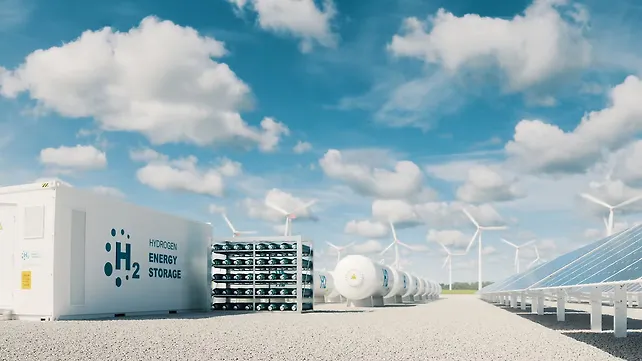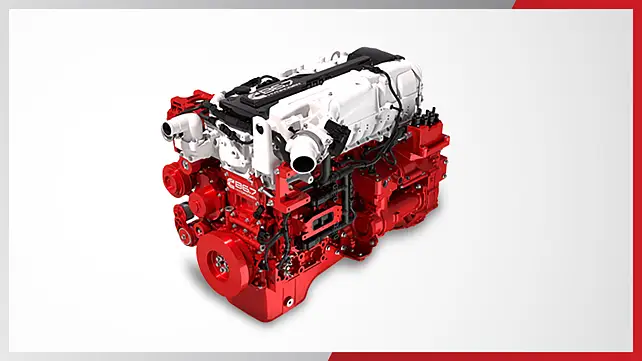
India has set itself an ambitious target of reducing its greenhouse gas (GHG) emissions to net zero by year 2070. GHG emissions are primarily responsible for climate change, leading to increase in global mean temperature, rising sea levels, extreme cold/ hot waves, floods, drought, etc. Data indicate that globally GHG emissions have increased significantly in the last three decades.
Hence, all stakeholders around the world have joined hands to drive towards sustainability and carbon neutrality. Carbon neutrality is being pursued continuously in various forums including COP summits and climate change conferences.
In India, transportation sector accounts for nearly 14% of total GHG emissions, and within the transport sector, road transport contributes the maximum. This provides an opportunity for the road transport sector to actively participate and contribute towards decarbonisation.
The automotive industry has been working for decades to reduce harmful pollutants, including carbon. There have been significant technological advancements in base internal combustion engines (ICEs) as well as after-treatment technologies.
The Oxides of Nitrogen (NOx) and Particulate Matter (PM) emissions have gone down by a staggering 90% for current BS6 vehicles launched in 2020 as compared to BS3 vehicles launched in 2010. Additional stringency in On-Board Diagnostics (OBD) limits and Real Driving Emissions (RDE) set to usher in from April 1, 2023 will ensure additional control on tail pipe emissions.
Additional tightening with fresh set of regulations on tail pipe emissions is expected to continue in the coming years to significantly improve the air quality in India.
Hydrogen Has Major Potential
Apart from conventional fuels, many alternate fuels (like CNG, LNG, ethanol flex fuel, biofuels, methanol, hydrogen, etc.) are either already being used or planned for future to reduce carbon emissions at source and to improve energy security for India. Among these alternate fuels, hydrogen is receiving special attention, as hydrogen is free of any carbon and produces zero CO2 emissions. Hydrogen has a potential to play a major role across number of sectors and hence is receiving global interest.

The announcement of “National Hydrogen Mission” in August 2021 and unveiling of “Green Hydrogen Policy” by the Indian government has unleashed plethora of opportunities in attaining decarbonisation.
In the road transportation sector, while battery electric vehicles (BEVs) and hydrogen fuel cell vehicles are known to be zero emission technology vehicles, there is an emergence of hydrogen internal combustion engines (H2 ICE) as a viable, near zero carbon emission technology solution for commercial vehicles in India. At scale, it can help the sector rapidly decarbonise. In fact, vehicles powered by green hydrogen, which is hydrogen produced by using renewable energy, have near zero well-to-wheel GHG emissions.
BEVs are increasingly finding their acceptance in passenger cars, two/three wheelers, small commercial vehicles, and city bus applications in India. However, they are yet to be proven commercially viable for the medium and heavy-duty truck/ tipper applications, due to reasons like penalty on payload, battery charging time, total cost of ownership, etc.
Fuel cell, on the other hand, uses hydrogen to produce on-board electricity to power the vehicles. Fuel cell-powered bus deployment has started in India, albeit in limited numbers.
Bridging Technology
While electrification (BEVs) & fuel cell technologies continue to mature and become affordable, H2 ICE is the promising bridging technology for India’s commercial vehicle sector. Some of the key advantages of H2 ICE include:
- Existing engine hardware can be modified to adapt H2 fuel and H2 combustion system;
- Existing vehicle drivelines can be used;
- Availability of eco system (existing manufacturing set-up, vendor base, dealer & service network, service practices, fleet operators, and drivers, etc.);
- Cost efficiency & Total Cost of Ownership (TCO) comparable to existing diesel/CNG variants;
- Can use low purity hydrogen (as compared to H2 fuel cells);
- Quick refilling time compared to battery charging for BEVs.

We believe that H2 ICE is the key zero carbon emission technology solution for commercial vehicles in India. Additionally, hydrogen fuels do not release any particulate matter, carbon monoxide, or liquid hydrocarbon fuel-based volatile organic compounds.
We believe H2 ICE-powered vehicles can hit India’s roads as early as middle of this decade, with seeding-in and test piloting happening before that. The growing presence of H2 ICE will spin off broader benefits in adjacencies of transportation (off-highway applications, gensets etc.) as well.
If majority of our trucks switch to H2 ICE, it will automatically spur the establishment of a hydrogen infrastructure ecosystem. The infrastructure would include fuel transportation network, fuelling stations, and repair shops – very similar to the support system that exists for diesel trucks today.
To a large extent, development of H2 ICE will also support the development of fuel cell (and vice versa) as both technologies have many common requirements. For example, hydrogen infrastructure (fuel production, fuel transportation and dispensation) and vehicle level hydrogen storage systems are common between the two, the H2 ICE and the H2 fuel cell.
In Conclusion
Cummins is uniquely positioned to help provide low-carbon options successfully and seamlessly, with the new range of ICE platforms that can run on low-carbon fuels as well as on hydrogen. Thus, Cummins can provide multiple options that meet our customer’s business needs and sustainability targets today.
However, development of a hydrogen ecosystem will need government and policy support. Given the support, hydrogen internal combustion engines will drive decarbonisation at a faster rate and will be a key enabler to achieve India’s objective of Net Zero GHG by year 2070.
About the Authors: Rajendra Petkar is President & CTO, Tata Motors & Director, Tata Cummins and Pradheepram Ottikkutti is CTO, Cummins Group in India.
Also Read:
Cummins India To Exhibit 'Destination Zero' Strategy Products At Auto Expo
Cummins, Tata Motors To Collaborate On Hydrogen-powered CVs
Tata Motors Works On Hydrogen-based Internal Combustion Engine